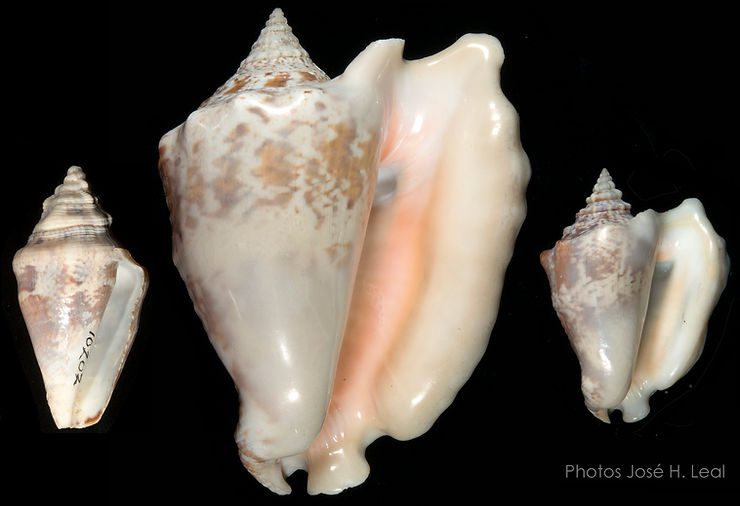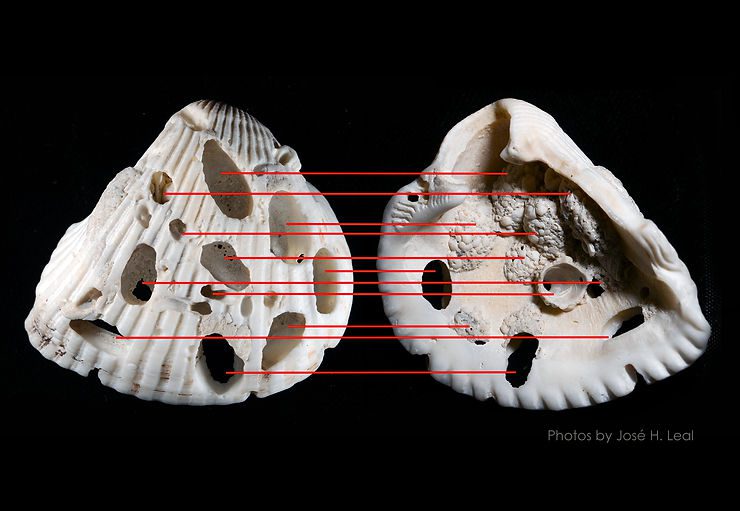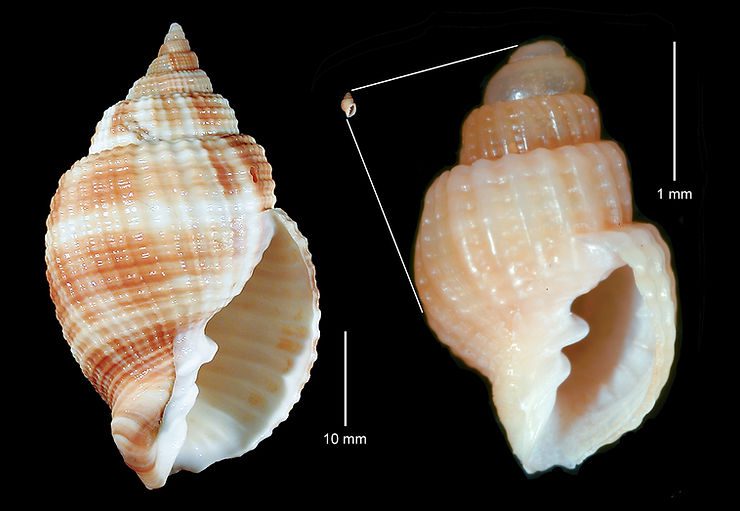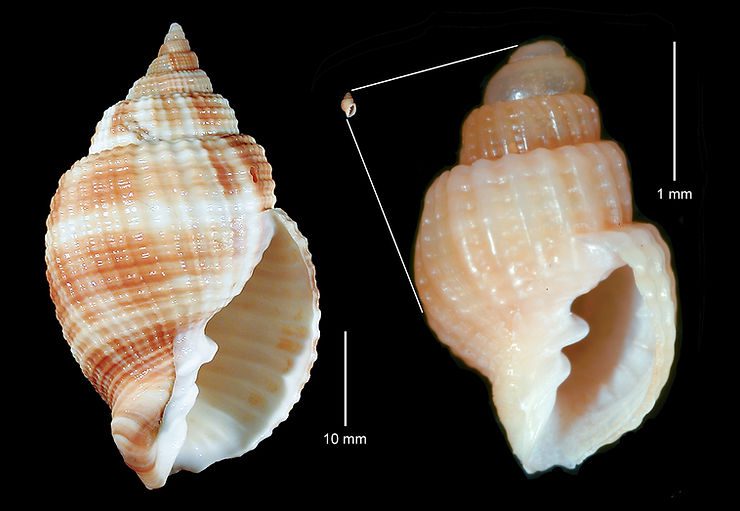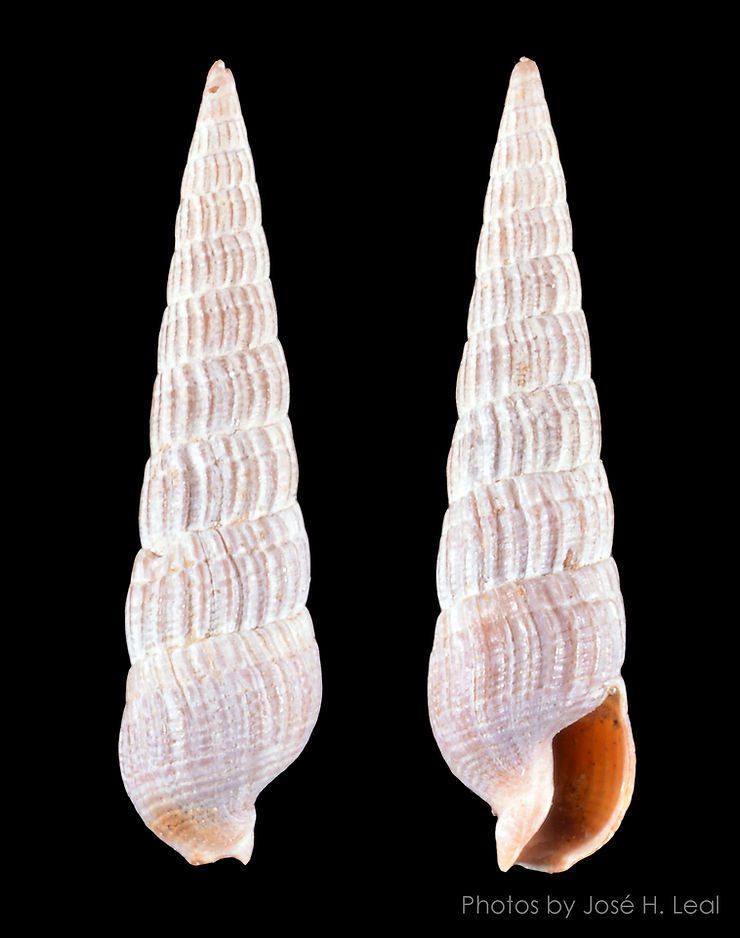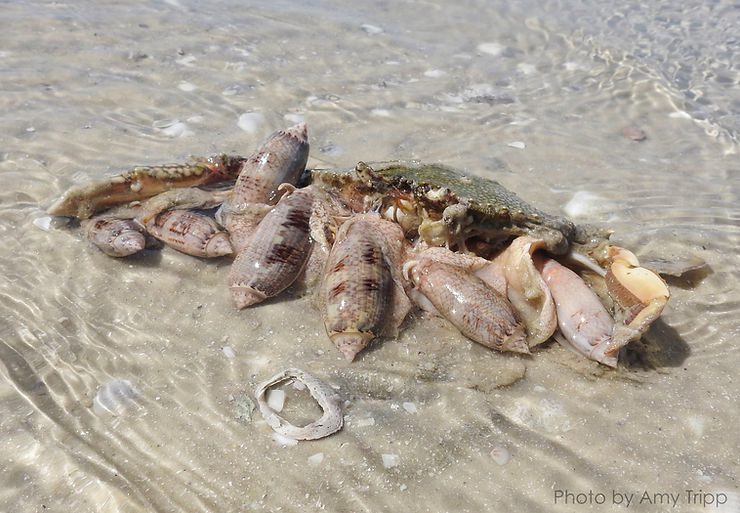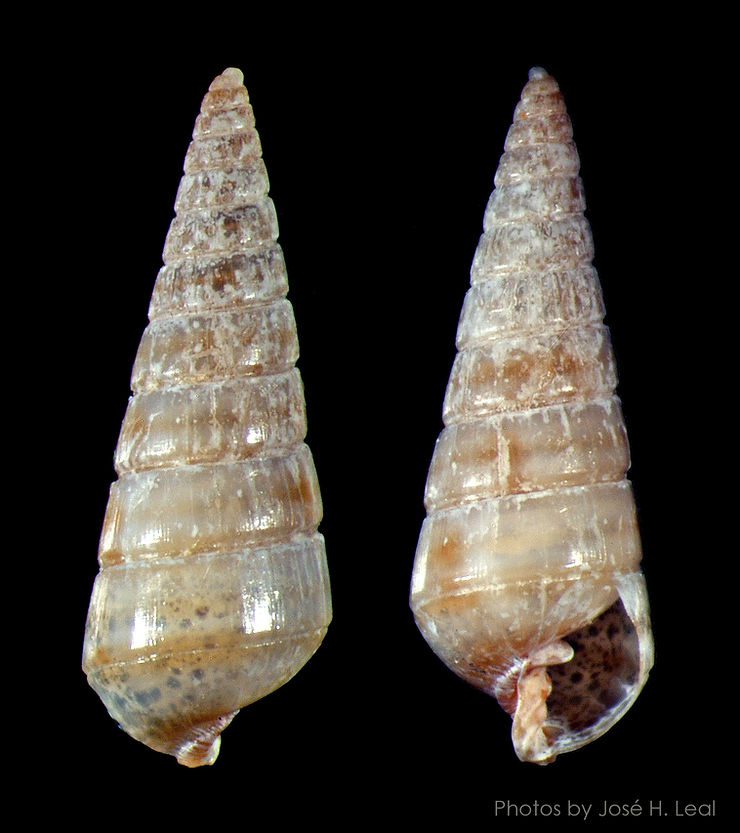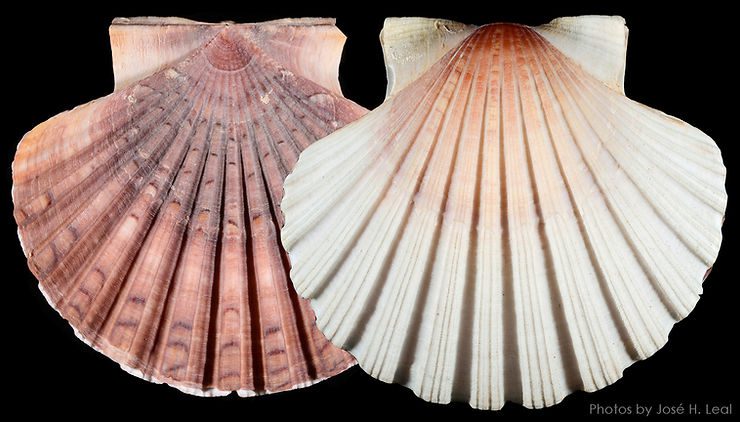
The Mangrove Periwinkle
As the vernacular ("common") name implies, the Mangrove Periwinkle, Littoraria angulifera (Lamarck, 1822), inhabits the trunks and branches of mangrove trees, in particular those of the Red Mangrove, Rhizophora mangle. The species may reach 30 mm (about 1.2 inch). Periwinkles are marine snails highly adapted at living almsot completely out of sea water, usually high above the intertidal ("between tides") zone. Mangrove Periwinkles feed, using the teeth of their rasping radula, on the thin fil
